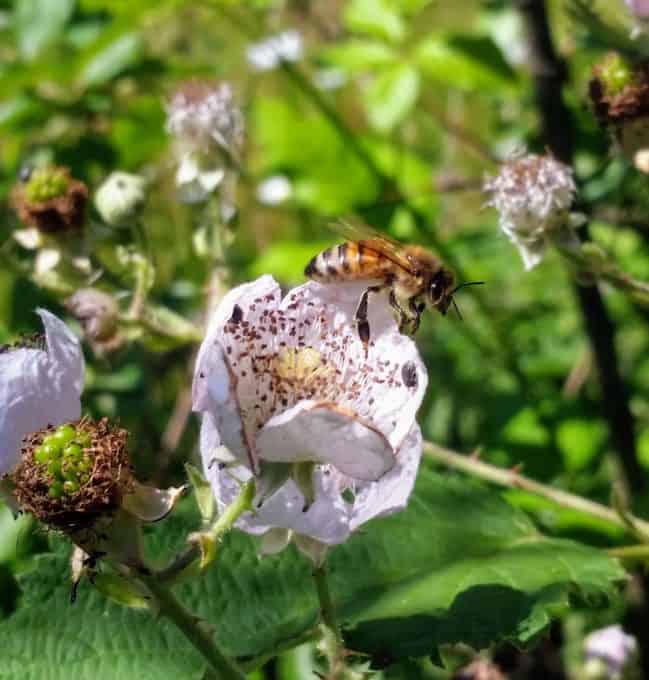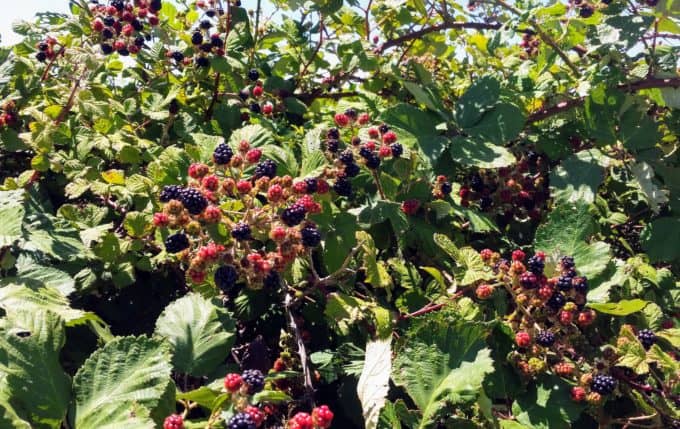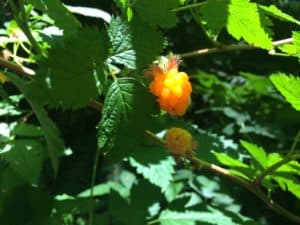As a new member of the Pacific Northwest Tech Team, I have been fascinated by the wide variety of cultivated, native, and invasive bee-friendly plants in the region. Coming from the arid Sacramanto Valley of Northern California, the lush greenery and cool mountains have been a welcome change as well. One thing I have been amazed by is the quantity of Himalayan blackberry. I thought the central valley had a lot, but in the Pacific Northwest it seems to invade every patch of available ground. This blackberry species is a ubiquitous sight along roadsides, waterways, and disturbed ecosystems such as recently logged forests and areas impacted by wildfire.
As with most invasive non-natives, there has been a concerted effort to fight the spread of Himalayan blackberry. The fight, however, does not seem to be going well, and in the meantime beekeepers are thankful for the early summer pollen and nectar flow it provides. In an environment increasingly impacted by intensive agriculture, it can can provide valuable forage between pollination contracts. I have observed the pollen to be cream in color and the bees can store a good amount of it during the bloom, which can last several weeks. Also, the shake-out is a welcome sight on warm June days when the nectar is flowing.
For those landowners who would like to encourage edible native berry species, replacing Himalayan blackberries with salmonberries or thimbleberries may be a good option. Although the flowers and fruit do not grow as densely, these species fill the same ecological niche at the forests edge and are also appreciated by honey bees and other pollinators. An added bonus of thimbleberries is that they are naturally thornless.
In many less-accessible spaces such as riversides, national forest land, and hedgerows, replacing Himalayan blackberry with native species is not feasible for now, and we have no choice but to coexist with this aggressive thorny vine. Perhaps our attitude should be “when life gives you blackberries, make blackberry honey!”

